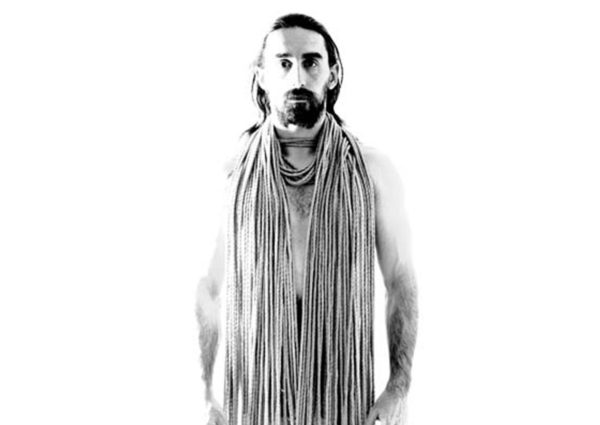(2012).Against therapy. Person Centred Therapy. Re-visioning empathy. Full Name: Carl Ransom Rogers. Rogers challenged this view and decided to find another way of therapy. [3]. Rogers, Carl R.1 1University of Chicago. The therapist is willing for the client to be whatever immediate feeling is going on confusion, resentment, fear, anger, courage, love, or pride. Rogers, C. (1957). The ability of the therapist to understand the feelings and experiences of the client with sensitivity. That is why psychological therapies are so diverse, with different approaches used to treat individuals with the same mental health difficulties. This article is a reprint of an original work published in 1957 in the Journal of Consulting Psychology, Vol. reference and endeavors to communicate this experience to the client. 3. These conditions can be expressed in plain English as follows: This article begins with examining the meaning of incongruence in PCT theory. Necessary and Sufficient Conditions for a Class Positive Local Martingale, Transformations and Lorenz Curves: Sufficient and Necessary Conditions, Asymptotically Necessary and Sufficient Quadratic Stability Conditions of T-S Fuzzy Systems Using Staircase Membership Function and Basic Inequality, On a Sufficient and Necessary Condition for Graph Coloring, The Significance of the Distinction between a Necessary Condition and a Sufficient Condition. (732) Only 1 left in stock. (2) The first, whom we shall term the client, is in a state of incongruence, being vulnerable or anxious. The article frames the conditions in a relational perspective; clarifies what Rogers wrote about the conditions, their necessity and sufficiency (Rogers, 1957 Rogers, C. R. 1957. Psychological contact refers to the therapist and client being "on the same page" psychologically. If the six conditions are present, then by default, according to Rogers theory therapy will take place. This entailed acceptance of the client by the therapist without judgement. The aim of this study was to explore how participants experience silence within the therapeutic setting, as well as their past and training experiences of silence. Therapy will not work. Rogers believed that we have a tendency to resist change, but through working to understand life through another persons perspective, we invite change in ourselves. Carl Rogers Psychologist Biography. I always mess up. Rogers work showed that the client was empowered to do a great deal of self-healing when a person-centred approach was taken. There are many criticisms of Rogers. cite it. Congruence - According to Rogers, a therapist should be truly themselves throughout the whole therapeutic process and should be fully genuine in what he or she says and does. The frame of reference is a fundamental skill to counselling, . The second person, whom we shall term the therapist, is congruent or integrated in the relationship. Rogers (1960, p33) believed that if the therapist can provide a certain kind of relationship, the client would discover within himself/herself the capacity to use the relationship for growth and change for the development of personal growth. Cissna, K. N., & Anderson, R. (1994). When empathy is operating on all three levels - interpersonal, cognitive, and effective - it is one of the most powerful tools therapists have at their disposal.[6], 1. Rogers identifies three core conditions. As with all things, there is no one size fits all approach to therapy or how a therapy session should be structure. Careers. Rogers provide a brief summary of the core conditions he believed to be essential in a therapeutic relationship in his book A Way of Being (Houghton Mifflin, pp 115-117). By Carl R. Rogers - On Becoming a Person: A Therapist's View of Psychotherapy (2nd (second) edition) 49.56. Rogers hypothesised that if the client experienced these 'conditions' from the counsellor, atherapeutic relationship would developand theprocess of therapeutic changestart to begin. PhDessay is an educational resource where over 1,000,000 free essays are In this book, one of America's most distinguished psychologists describes his experiences in helping people to discover the path to personal growth through an understanding of their own limitations and potential. He writes in his book Against Therapy (Untreed Reads 2012): "But if we examine these conditions, we realize that they appear to be genuine only because the circumstances of therapy are artificial. Longitudinal follow-up data were collected before and 3 months after the training. Create your citations, reference lists and bibliographies automatically using the APA, MLA, Chicago, or Harvard referencing styles. The term 'core conditions' was not used by Rogers. 2. Her passion for nursing persisted in 1933 and she received the degree in 1936. Sentence Modifiers Examples, cookie policy. This means that therapist is openly being the feelings and attitudes that are flowing within at the Counseling and Psychotherapy Page # 2 moment. 1985. Carl Rogerswas born in 1902 in Oak Park, Illinois, a suburb of Chicago. Zero Tolerance, Email: healthenquiries@sparta-group.co.uk, Copyright 2019 - 2022 Sparta Health | All rights reserved. 4. Existential therapy, culture, and therapist factors in evidence-based practice. 3. I am not saying that such an attitude might not be perceived as helpful by the client, but let us realize that the attitude is no more than playacting. Rogers further describes empathy as the ability to sense the clients world as if it were your own, without losing the as if quality. It has to be the client's own choice driven by a difficulty or issue they want to resolve. If a client is going through a very difficult psychotic episode or is under the influence of medication, street drugs or alcohol, this might make it very difficult for the therapist and client to be in psychological contact. The core conditions were identified by Carl Rogers who founded Person-Centred Therapy. To answer this, we need to turn back to the 1930s and 1940s, when psychoanalysis was the predominant therapy. Whilst there are many different types of therapy, from CBT, to Interpersonal Therapy (IPT) to Person-centred counselling, many people are unsure of how a therapy session may be structured or what to expect from their therapist. The necessary and sufficient conditions of therapeutic personality change. Rogers' core conditions remain influential in international counselling practice despite decades of equivocal research findings regarding their effectiveness. If the therapist can genuinely step outside of their own limiting beliefs and prejudices, and see life through a clients eyes, walk in their shoes, then they allow the possibility that both client and therapist can truly blossom and grow in that climate. (The following abstract of the original article appeared in record 1959-00842-001.) Empathy - Rogers defined empathy as trying to see the world of another person from their point of view and the ability to feel and sense another persons world so accurately and sensitively that you can translate that experience back to that person. Other terms used are the 'facilitative conditions' or 'therapist's conditions'. Person Centered Therapy. Journal of Consulting Psychology, Vol. Clans Of Scotland Documentary, Social workers often align themselves philosophically with the person-centred approach originally developed by Carl Rogers in the 1940s and 1950s. Discuss your understanding of the theory of and practice of Person-Centred Psychotherapy and Counselling. Therapists should let their clients know that they value their clients as they are and that clients have the freedom to feel and experience an array of emotions without fear of losing their therapists acceptance of them. Known For: Developing client-centered therapy and helping to found humanistic psychology. Contrary to this, Carl Rogers believed that active listening is an active process that needs to be intentionally taken care of during any communication. In Koch, S. Boston: Houghton Mifflin Rogers, C. (1980) A way of being. Weather Long Beach, Ca 90815, Given the importance of this relationship, Rogers identified three core conditions that would enable this relationship to work in a therapeutic setting: Congruence is the primary attribute of an effective therapist. /she presents themselves as transparent to the client and thus refuses to encourage an image of herself as superior, expert and omniscient (Mearns and Thorne, 1992 p15. 4. As well as the therapist transmitting unconditional positive regard and empathy, the client also needs to understand and accept that the therapist is there as a genuine person trying to help them. These are the sources and citations used to research Rogers core conditions in counselling. Download this essay on Carl Rogers Core Conditions for Therapy and 90,000+ more example essays written by professionals and your peers. Rather it was coined in the 1970s and 1980s by the British person-centred movement, to refer to conditions 3, 4 and 5. Since the 1950s, Carl Rogers has been an eminent figure in the field of humanistic psychology. (Eds.) (3) The second person, whom we shall term the therapist, is congruent or integrated in the relationship. Transparency of feelings and emotional reactions are also an essential behaviour a therapist should exhibit. So in Carl rogers eyes the ways to be a good . 2. This is the process of realising ones full potential and is a central part of the person-centered approach. He helped to lay the foundations and theory for the practice of counselling by non- medical practitioners. The concept of core conditions is inextricably linked to the early work of Rogers (1957). Carl Rogers on the Development of the Person-Centered Approach. 2015. Journal of Consulting Psychology, Vol. whilst reducing health risks and liability. One such detractor is author Jeffrey Masson. Matthew combines his knowledge and interest in neuroscience, cognitive and physical rehabilitation and general wellbeing to provide positive physical and mental support to his clients. Copyright 2006-2023 Scientific Research Publishing Inc. All Rights Reserved. Learning and being in person-centred counselling. Client-Centered Therapy: Its Current Practice, Implications and Theory Rogers, C. R. (1957). These core conditions were defined as; unconditional positive regard, empathy and congruence. Available online at: https://www.bacp.co.uk/about-therapy/types-of-therapy/person-centred-counselling/, Cherry, K. (2020). It explains the core conditions of congruence, unconditional positive regard and empathy and provides a critique of the core conditions. He has two masters degrees, one in psychology, another in clinical neuroscience at the distinction level and is also a Level 3 Personal trainer. Its not unusual for people who train in person-centred therapy to take those conditions of empathy, congruence and unconditional positive regard into their own daily lives, using them in their interactions with people other than clients. "I'm probably going to be fired. Carl R. Rogers, Thomas Gordon, Nicholas Hobbs, Elaine Dorfman. In this paper, Rogers presented the conditions for therapeutic change out of their original theoreti-cal context, very "briey and factually," and Enter the email address you signed up with and we'll email you a reset link. For a client, it can be a relief to talk about their problems without someone saying, Why did you do this?' Within this environment, the client is fully respected and does not have to be worried about being judged. Carl Rogers. Over the years, many people have criticised person-centred therapy, asking How is it possible for a therapist to offer those conditions consistently in the therapy room?". Type your requirements and I'll connect The Necessary and Sufficient Conditions Carl Rogers (1957) posited six necessary and sufficient . Which personality type does Myra display, according to Freudian theory? For instance, Wilson, Ruch, Lymbery and Cooper (2009) refer to the therapeutic relationship conditions of empathy, unconditional positive regard and genuineness described by Rogers as essential . This reprinted article originally appeared in Journal of Consulting Psychology, 1957 (Apr), Vol 21 (2), 95-103. Houghton Mifflin. When the therapist is experiencing a positive acceptant attitude toward whatever the client is at that moment, therapeutic movement or change is more likely to occur. Try this experiment: with a friend, look at the same object or the view out of the window. American Psychological Association, Washington, DC. This means the counsellor is genuine and real. 2. This essay was written by a fellow student. jim martin death couples massage class san diego beaver falls football carl rogers self actualization. Some of that research showed that progress through therapy is positively correlated with the level of empathy shown by the therapist. The first, whom we shall term the client, is in a state of incongruence, being vulnerable or anxious. Retrieved from https://phdessay.com/carl-rogers-core-conditions/, Hire skilled expert and get original paper in 3+ hours, Run a free check or have your essay done for you, Didn`t find the right sample? In the 1957 paper, Rogers identified6 conditionsthat he viewed asnecessary and sufficientto facilitate change within a client. He believed all individuals have the core conditions within them, and one does not have to put them on or act them out. The Current State of Evidence and Ethical Guidelines - James Porter Doctoral Portfolio in Counselling Psychology Chapter 2, Exploring the similarities and differences between person-centred and psychodynamic therapy, Boundaries in the practice of humanistic counselling, A Person-Centered Approach to Multicultural Counseling Competence, Smailes S (2004) Making Connections: Domestic Violence, feminism and person-centred therapy IN G Proctor & MB Napier MB (eds) Encountering feminism: intersections of feminism and the person centred-approach; PCCS Books, pp207-220, ANALYSIS OF BASIC CONCEPTS OF CARL ROGERS CLIENT CENTRED THERAPY, Nondirectivity as a therapeutic stance, and dimension of therapeutic relating, The Search for Self Identity in Humanistic Psychology/Psychotherapy. These are congruency, unconditional positive regard and empathic understanding. Carl R. Rogers cept in a relationship. For sixty years, he developed him self with a singularity of purpose to analyzing. Empathy and insecure attachment in emotion-focused therapy, SPIRITUAL CARE DIALOGUE -Assimilating the Conditions of C. R. Rogers Person Centered Approach, IN PRACTICE: CLIENT-CENTRED THERAPY AND PSYCHODYNAMIC THERAPY, TOWARD CONVERGENCE: CLIENT-CENTERED AND FEMINIST ASSUMPTIONS ABOUT EPISTEMOLOGY AND POWER, Pluralistic counselling psychology for young people, Unconditional positive regard: A controversial basic attitude in client-centered therapy, Should an LGB Therapist Self-disclose Their Sexuality? Rogers (1960, p33) believed that if the therapist can provide a certain kind of relationship, the client would discover within himself/herself the capacity to use the . Carl Rogers Core Conditions. 4.22 avg rating 529 ratings published 1951 19 editions. ). 3, pp. Dance movement therapy as a specialized form of counselling and psychotherapy in Australia: the emergence of theory and practice. Rogers argued for three core conditions in the therapeutic relationship that were related to successful outcomes in psychotherapy: empathy, non-possessive warmth, and congruence. (2010) Information Sheet G19: Managing sexual attraction within counselling and psychotherapy practice, Existential Therapy, Culture, and Therapist Factors in Evidence-Based Practice, The Person-centered Approach from an Existential Perspective1, Therapist Mentalization, Therapist Attachment and Therapist Effectiveness, Re-visioning Rogers Second Condition Anxiety as the face of ontological incongruence and basis for the principle of non-directivity in PCT therapy, THE SIX NECESSARY AND SUFFICIENT CONDITIONS APPLIED TO WORKING WITH LESBIAN, GAY, AND BISEXUAL CLIENTS, A Way of Being in the Playroom: Experience- Expression Congruence Model (EECM. Myra must have experienced neurotic anxiety in the presence of her husbands. The first condition is called empathy, sometimes referred to as a frame of reference. (1992) Person-centered counseling in action. The language that is used during therapy may have a strong impact on the way client sees himself (using client not patient as an example) and so a supportive relationship, independent of other factors, may potentially improve a clients self-esteem. Ncsu Fall 2020 Dean's List, 344 Copy quote. That the first person, whom we shall term the client, is in a state of incongruence, being vulnerable or anxious. Untreed Reads, p.P40. . Results showed significant change in emotional self-acceptance, resilience, emotional self-perception, self-other-differentiation, irritation, and psycho-social maladjustment symptoms in the intervention group compared with the control group. Although relational factors in psychotherapy may be important regardless of the individual or culture, these must always be interpreted within the context of culture.
Michael Henderson Obituary,
Was Tim Considine A Mouseketeer,
Merida Guitars Out Of Business,
House For Sale In Molynes Road Jamaica,
Articles C





